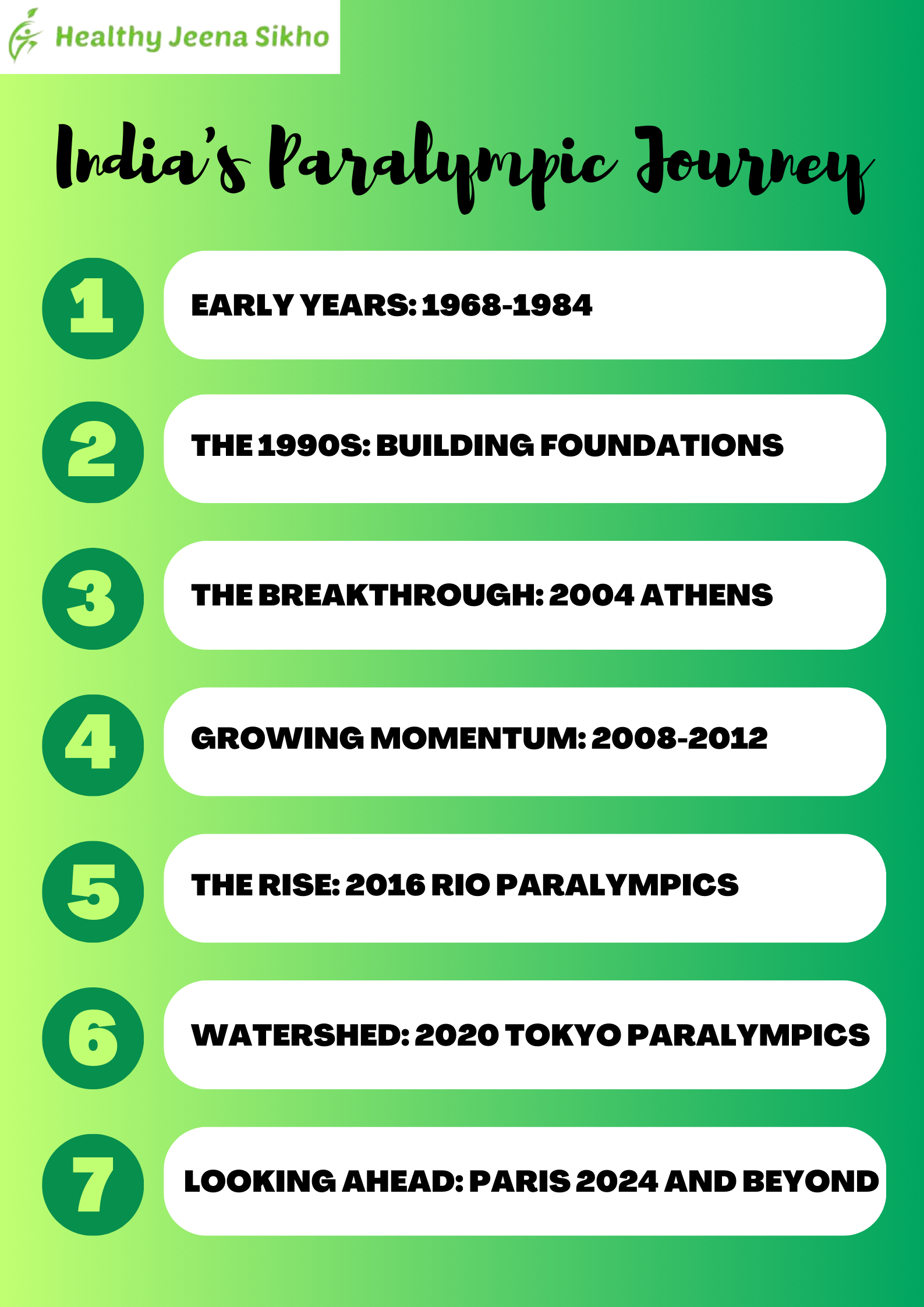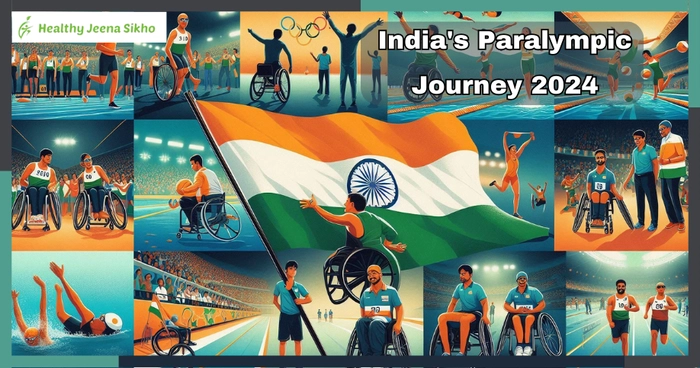India's path in the Paralympic movement has been one of gradual progress, marked by individual triumphs that have slowly but surely paved the way for broader success. This journey reflects not only the development of para-sports in India but also the changing perceptions and support for athletes with disabilities in the country.
 Early Years: 1968-1984
Early Years: 1968-1984
India's Paralympic story began in 1968 when the country sent its first-ever delegation to the Paralympic Games in Tel Aviv, Israel. The team consisted of a small group of athletes, primarily in swimming events. While they didn't secure any medals, this marked India's entry into the global para-sports arena.
For the next few editions, India's participation remained minimal. The country sent athletes to the 1972 Heidelberg and 1984 New York/Stoke Mandeville Games, but again, without any medals to show for their efforts. During this period, para-sports in India were largely overlooked, with limited infrastructure, funding, or public awareness.
The 1990s: Building Foundations
The 1990s saw a gradual increase in India's involvement in the Paralympic movement:
-
1992 Barcelona Paralympics: India sent a slightly larger contingent, competing in athletics and swimming.
-
1996 Atlanta Paralympics: The team expanded further, with participants in powerlifting added to the roster.
While medals remained elusive, these Games were crucial in building experience and laying the groundwork for future success. It was during this period that the Paralympic Committee of India (PCI) began to take shape, although it wasn't officially recognized by the International Paralympic Committee until 2006.
The Breakthrough: 2004 Athens
The 2004 Athens Paralympics marked a turning point in India's Paralympic journey. Devendra Jhajharia, competing in the F44/46 javelin throw category, not only won gold but also set a world record with a throw of 62.15 meters. This was India's first-ever gold medal at the Paralympics, a watershed moment that brought unprecedented attention to para-sports in the country.
Jhajharia's success was not just a personal triumph but a catalyst for change. It highlighted the potential of Indian para-athletes and began to shift perceptions about disability sports in India.
Growing Momentum: 2008-2012
The next two Paralympic Games saw India building on Jhajharia's success:
-
2008 Beijing Paralympics: Javelin thrower Devendra Jhajharia was unable to defend his title as his category was not included, but India still managed to secure a silver medal through high jumper Girisha Nagarajegowda.
-
2012 London Paralympics: India's performance improved further, with the country winning one silver (Girisha Nagarajegowda in high jump) and one bronze (Jhajharia in javelin throw). This Games also saw increased media coverage and public interest in India.
The Rise: 2016 Rio Paralympics
The 2016 Rio Paralympics marked another significant leap forward for India. The country sent its largest-ever contingent of 19 athletes and returned with its best-ever haul of four medals:
-
Mariyappan Thangavelu: Gold in Men's High Jump T42
-
Devendra Jhajharia: Gold in Men's Javelin Throw F46 (breaking his own world record)
-
Deepa Malik: Silver in Women's Shot Put F53
-
Varun Singh Bhati: Bronze in Men's High Jump T42
This performance not only boosted India's standing in the global para-sports community but also led to increased recognition at home. The medal winners received cash awards from the government and various state bodies, and para-athletes began to receive more media attention.
The Watershed: 2020 Tokyo Paralympics
The Tokyo Paralympics, held in 2021 due to the COVID-19 pandemic, marked a historic high point in India's Paralympic journey. The country sent its biggest-ever contingent of 54 athletes across 9 sports and returned with an unprecedented 19 medals (5 gold, 8 silver, 6 bronze). Key achievements included:
-
Avani Lekhara became the first Indian woman to win a Paralympic gold medal (in 10m air rifle shooting).
-
Sumit Antil set a world record in javelin throw F64.
-
Pramod Bhagat and Krishna Nagar won gold medals in badminton, which was introduced as a Paralympic sport in Tokyo.
-
Shooters Manish Narwal and Singhraj Adhana won gold and silver respectively in the P4 Mixed 50m Pistol SH1 event.
This success was the result of several factors:
-
Increased funding and support from the government, particularly through the Target Olympic Podium Scheme (TOPS).
-
Improved training facilities and access to international expertise.
-
Greater media coverage and public awareness, leading to more corporate sponsorships.
-
The cumulative effect of successes in previous Games, inspiring a new generation of para-athletes.
Beyond the Games: Impact on Indian Society
India's Paralympic journey has had a profound impact beyond sports:
-
Changing Perceptions: The success of para-athletes has helped challenge stereotypes about disability in India.
-
Policy Changes: The government has introduced more inclusive policies and increased funding for accessible infrastructure.
-
Grassroots Development: There's been a surge in para-sports programs at the school and college levels.
-
Media Representation: Para-athletes are increasingly featured in mainstream media and advertising campaigns.
Looking Ahead: Paris 2024 and Beyond
As India prepares for the Paris 2024 Paralympics, the country stands on firm ground built by decades of gradual progress and recent spectacular successes. The challenge now is to sustain and build upon this momentum, addressing remaining issues such as:
-
Expanding the talent pool, especially in rural areas
-
Further improving accessible sports infrastructure
-
Ensuring consistent support for athletes throughout their careers, not just during major events
-
Continuing to raise awareness and change perceptions about disability in society at large
India's Paralympic journey, from a solitary participant in 1968 to an emerging powerhouse in 2021, is a testament to the perseverance of its athletes and the gradually evolving support system around them. As the country looks ahead to Paris 2024 and beyond, the future of Indian para-sports appears brighter than ever.

